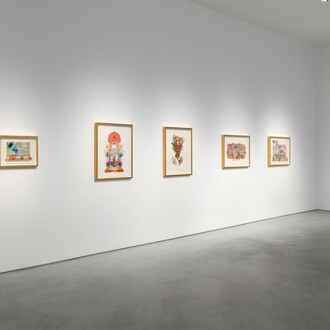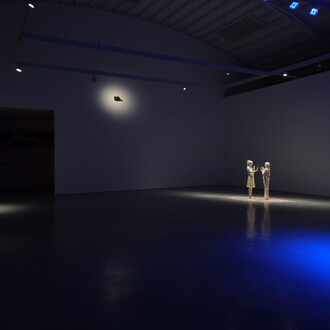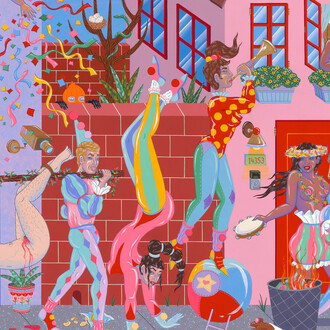Roberts Projects is pleased to present its first solo exhibition by painter Amoako Boafo. Representing individuals from the surrounding countries of his native Ghana, Boafo attributes to his portraits a natural grace, poise and elegance. Artists who are able to achieve this palpable sense of tenderness within the scope of their working process are few and far between, yet Boafo does exactly this, communicating both warmth and vulnerability in his intimate portrayals of what he terms the “Black Diaspora.”
As with other contemporary portrait artists, including Alice Neel, Jordan Casteel, Lynette Yiadom-Boakye and Noah Davis, Boafo attempts to create a new vernacular, reframing his own experience and that of his subjects to include a more variegated understanding of the Black Experience.
Considering the sociopolitical landscape of the past two years, coupled with how racism is alive and well in the world, adds yet another level of complexity and relevance to Boafo’s project. Giving credence to this is the idea of a diaspora, of being uprooted and displaced again and again not within the context of a life “well lived,” but in the context of abuse, bigotry and racism, is the sad engine that drives these enigmatic paintings. Boafo seeks less to diagnose a problem, and more to initiate a human connection whereby we as viewers might arrive at our own perceptions, coming to these images with fresh eyes.
The way he paints his figures also suggests this widening diaspora of change, understanding and resolution. Whereas the bodies of these men and women are obviously discernible as literal figures occupying space and time, the looseness of Boafo’s painting style suggests a transition, or one might even go so far as to say, a transgression, juxtaposing the tension within the paint itself against the precise and evenly rendered line work that creates the totality of each image.
There is also the distant echo of Egon Schiele here and portraits such as Tonica Hunter (2017) bring to mind Schiele’s spare and brutal lines, the background, shifting and dystopic, while the central figure, hides her face behind a raised hand, revealing only her eyes that gaze out into an uncharted world ahead. As with Schiele, Boafo suggests a deep and unbridled power, one we can only access as viewers through the figure’s fiercely penetrating gaze. But there is also the suggestion of violence within the painterly gestures, and one is reminded of the monumental works of Leon Golub, whose Mercenaries series made in the mid 1970s, blurred the boundaries between oppressed and oppressor. As with Golub, the bodies of Boafo’s figures appear to be in motion, or at the very least not content to sit still. His thick impasto application of paint creates the illusion of movement and deep shadows, but it is his gestural lines within the paint that suggest an emotional resonance, a fractured expanse within our human experience.
The gaze is significant to Boafo in more ways than one, and most of his images allow us to share moments of deep personal reflection with his subjects. Each appear to look out and just beyond us. Often there is no distinction between the figures and the background, creating a seamless merging of body and space. Such is the case with Yellow Dress (2018), where the background merges with the figure’s dress, blurring the boundaries between both. This is a space alive with luminescence; a space commanded and commanding, where a young man sits in front of a vase of small purple flowers as though all the world depended on his being there at that exact moment, in company of those delicate blooms. In the end what Boafo gives us is a window into our own experience as seen through his eyes and the eyes of the people he paints, and it is this connection that allows us a moment of expansion, one that is precious and so necessary.
Amoako Boafo was born in Accra, Ghana, and is currently based in Vienna, Austria. He studies at the Academy of Fine Arts, Vienna under the directorship of Prof. Kirsi Mikkola and Prof. Ashley Hans Scheirl. His work investigates the relation of the personal and the structural by centering Black subjectivity.
















